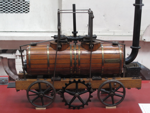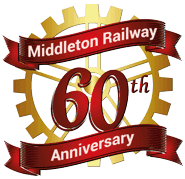A separate page describes the overall structure of the project to build the running shed, and in particular describes the 7 phases through which the project proceeded. This page describes how the project actually progressed, in terms of which of these phases were completed when.
1. Overall design and planning
This phase involved designing the building in enough detail that we could then apply to the City Council for planning permission for its construction. The phase started in May 2013, when we initially took the decision to go ahead with the project, on the basis of estimates that the building was likely to cost about £46,000.
This phase took much longer than we would have liked, largely because of delays in the process of obtaining planning permission. The material for the "pre-application" stage of this process, which is intended to check that a project is in principle worth submitting for full planning permission, went in to the City Council during September 2013, which unfortunately was just after all the plans for the Leeds Trolleybus system had been submitted. This meant that our project had to wait until the planners had got their heads round that lot, and so it actually took almost 10 months to be processed, whereas these pre-applications are normally supposed to be processed in about 6 weeks at most.
Once the pre-application stage had finally been completed, and we had what used to be called outline planning permission, there was very little more work that had to be done to produce the application for full planning permission. We were therefore able to submit this in August 2014, and the processing of it ran to something much closer to the expected schedule. Full planning permission was therefore received in December 2014.
2. Construct a pit
One of the decisions made during phase 1 was that the running shed needed to have a pit between the rails, which would be constructed by extending the existing outdoor pit, so that this had to be done before any other construction work. Apart from a few minor bits of work, however, we could not start this until we had received planning permission, and then for obvious safety reasons we could not go digging holes next to track on which trains were running. Consequently, the construction of this pit extension could not start until January 2015, after our Santa Special trains had finished running in December 2014.
A separate page describes in detail the work that was done for this phase, which was finally finished in early April 2015, by which time the project had cost just under £7,900.
3. Detailed design and tendering
The building is illustrated in the main project page, and for this kind of construction a specialist firm can do a far more efficient job of designing, fabricating and then assembling the steel framing and the cladding than our volunteers could. Hence, after the preparation of yet more drawings, and discussions with the City Council to ensure that there would be no problems with obtaining Building Regulations approval when that stage was reached, this detailed design work was put out to tender in November 2015.
After discussions with the interested contractors the tenders were submitted, and they were considered in January 2016, when the one from Midbrook Steel was accepted. By this time the estimated cost to complete the project had risen to just under £49,000 (as compared with the original estimate of about £46,000), and of course this is on top of what had been spent in phases 1 and 2.
In late February 2016 a contract was signed with Midbrook Steel for the construction of the foundations, the steel frame and the steel cladding. As part of this they would carry out the specialised calculations that are needed to ensure that the foundations and frame of the building will be strong enough to produce a building that will then be safe to use.
Alongside this design work, the final preparation of the running shed site needed to be done, to clear it ready for construction work in the next phase to start. Also, it had been established during the discussions with the contractors that part of the fence to the whole site would need to be removed, to allow access to the western wall of the shed. This would require a temporary closure of the footpath that runs along this side of the site, and this too has to be approved by Leeds City Council.
Eventually formal Building Regulations approval was given, as was the approval to close the footpath, and once the last bits of site preparation had been completed construction work could be scheduled to start, which tentatively was set for the end of May 2016.
4. Design and construct foundations
Having completed the design of the building, obtained both Building Regulations approval and approval to close the footpath, and prepared the site, work could start on the next phase, which is the construction of the foundations. As explained in the page describing the project structure, we had originally expected to do much of this work ourselves, and had intended to try to schedule it for the period from January to March 2016 - because again, as with the pit, it would not be safe to be digging holes next to track on which trains are running.
This plan had, however, changed during the tendering process in phase 3, since it became apparent that it would be better if the contractors were also to construct the foundations, even though this would be more expensive, because this would ensure that the foundations and the frame will match each other exactly. As part of accepting the tenders, therefore, it was decided that Midbrook Steel will also be constructing the foundations, which they could do quickly enough that it would not cause any disruption to the operation of trains.
As described above, with work on the detailed design of the frame and the foundations well under way, as was site preparation, it was hoped that the construction of the foundations could start in mid-April 2016. Unfortunately, though, the formalities involved in arranging for the temporary closure of the footpath alongside the site delayed things a bit further, and so this date slipped back, at least into May.
As well as the foundations, an oil separator needed to be installed, and (again as explained in the page describing the project structure) this would require a hole that would be sufficiently deep that we could not carry out this part of the work safely ourselves. Therefore, separate tenders were invited from specialised contractors to do this bit of the excavation and installation for us. These were received in mid-April, and Drainstore were appointed to do this work.
Finally, on Tuesday 31st May the contractors arrived to start work on the construction of the foundations. As promised they made very rapid progress, and in barely a week the foundations were complete. The work of installing the oil separator then had to be scheduled so that it would not affect our train operations, which was tricky since we had three special events between the middle of June and the middle of July: the Model Railway Exhibition, the Steampunk event and the Victorian Gala. Eventually the work was carried out during the week before the Victorian Gala (ie the week beginning Monday 11th July), and completed in good time to avoid any disruption to the gala.
5. Erect framework
As soon as the foundations had been completed and the oil separator installed, then work started on erecting the pre-fabricated steel frame for the building. This too was done by Midbrook Steel, who both supplied and erected the frame. While this phase is extremely important, because all the rest of the building is supported by the frame, it was only expected to last for a week at most, and that is just what happened. It followed on immediately from phase 4, with just the railway's Victorian Gala weekend (16th and 17th June 2016) in between, and was indeed completed within the week. It was then expected that it would run straight on into phase 6, but the contractors recommended that this plan should be changed, partly so as to fit in with the construction of the Picton shelter building.
6. Roofing, cladding and brickwork
Once the steel frame was in place, then Midbrook Steel, who were also supplying the cladding sheets, could have started work on fitting them to the frame to form the walls and roof. They fitted the roof, effectively as part of phase 5, but their recommendation was that it would be better if the brickwork of the walls were to be constructed next, before the cladding sheets were fitted above it.
Thus, the next bit of this stage was that we prepared to start laying the bricks. This sounds easy if you say it quickly, but there were at least 9,000 of them! So, we knew from experience that actually the rest of this phase would involve more work on our part than any of the rest of the project - even the construction of the pit. We tried hard to progress it as quickly as we could, but it actually ran on into early December 2016.
Once the bricks had been laid, then Midbrook returned to site, just after Christmas, and fitted the cladding sheets for the walls.
7. Fitting out
By early January 2017 the walls, doors and roof were complete enough for the building to be more-or-less secure, once the main doors had been fitted. Discussions had been going on as to whether this should be a roller shutter door or a pair of swing doors, and eventually it was decided that swing doors would be better, because a roller shutter door would have to be mounted inside the building, and so would reduce its effective length by over a foot - and this extra bit of space would make it much easier to work in the building.
So the doors were constructed, and as soon as they were fitted and the building was secure then we were able to start installing internal features. These included flooring, the electrical wiring needed for lighting, power supplies and ventilation, and also the internal smoke troughs in the roof, which will be part of the ventilation system.
We had rather hoped that a lot of this would be finished before we started running trains again in March 2017, but then we had hoped that it might be finished by the end of 2016, and from our experience of having constructed our other workshop buildings we were well aware that all sorts of delays could occur. Consequently, we were not surprised that this was not achieved, and actually the last bits of the work ended up running on almost to the end of 2017.
Go on to the next stage in this project.
Go back to the previous stage in this project.
Return to the overall description of this project.
More Information
Other pages about this project and the "Buy a Brick" appeal:
- An overview of the project and the appeal;
- The "Buy a Brick" appeal;
- The structure of the project;
- The construction of the pit;
- Design and site preparation;
- Construction of the foundations;
- Erection of the framework;
- Construction of the walls;
- Fitting out;
- The opening ceremony.
Other pages provide more information about:








